Blog
3 presentations, 9 takeaways on the long-term impact of COVID-19 on learning and how education systems can respond
On the third day of the annual UNU-WIDER Conference on 8 September, RISE presented findings from three studies on COVID-19's impact on education systems. These studies underline the urgent need to remediate learning losses, but they also illustrate how systems can ‘build back better’.
RISE’s panel on the third day of the UNU-WIDER Conference last month set out to shed light on the longer-term impact of COVID-19 on children’s learning outcomes. Three studies were presented: simulations of potential learning losses, actual empirical measures of learning lost in Nigeria, and a study of efforts to remediate and recover from the pandemic in Pakistan.
Taken together, the three presentations highlighted the ways in which the pre-existing learning crisis has been exacerbated by COVID-19 and underlined the need for immediate responses to remediate losses by prioritising foundational skills, assessing children on return, and aligning instruction with children’s new levels. Simultaneously, they highlighted the potential that recovery (if done right) has to drive long-term systems change that brings instruction and children’s levels into better alignment.
What do simulations suggest we can we expect from losses, and how can systems best respond?
- A study by Michelle Kaffenberger models projected learning losses from the pandemic-induced school closures and simulates different mitigation scenarios to help education leaders plan for school reopening. It found that the youngest children stand to lose the most: For today’s 1st graders, missing half a year’s learning could reduce long-term learning outcomes by more than two years.
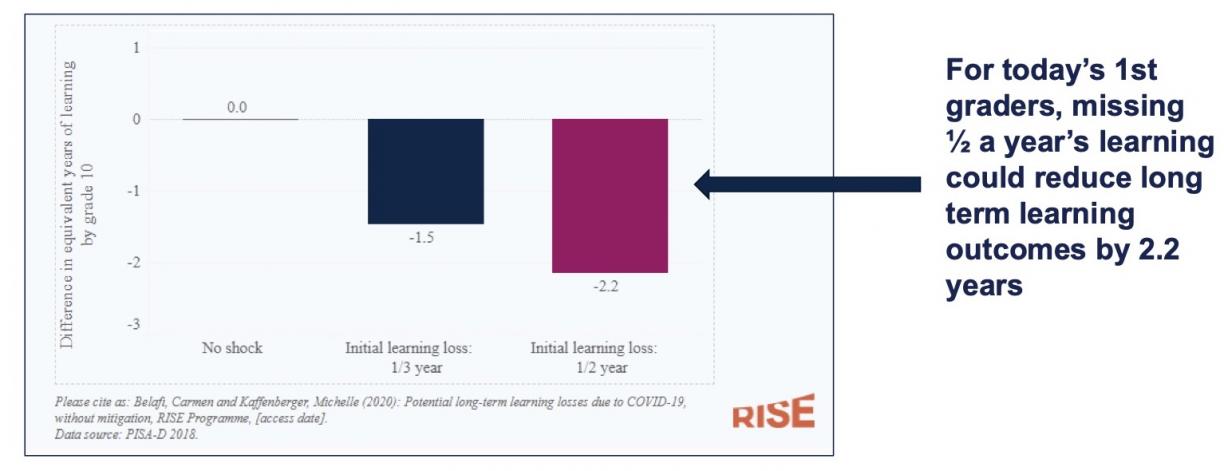
- COVID-19 could cause losses that far exceed the actual time schools have been closed, because learning losses can continue to build after children return to school; when children re-enter school behind the curriculum, they continue falling further behind without remediation.
-
Kaffenberger identifies three clear steps to mitigate losses (and potentially even build systems back stronger) following the return to school:
-
Set learning goals that focus on foundational skills
Children who miss foundational skills early rarely catch up, and young children who miss foundational skills face the largest negative, long-term consequences. -
Adapt instruction to meet children where they are
Children will need remedial instruction when they return to school. Approaches such as streamlining or condensing the curriculum, beginning the year teaching from the previous year’s curriculum, and Teaching at the Right Level-type approaches can help. (All require supporting, equipping and enabling teachers to adapt instruction.) ALIGNS principles can help. -
Strive for system changes that better align instruction and children’s levels not just in the short-term, but in the long-term
Political openness to addressing low learning and curriculum reforms to better align instruction with children’s learning levels and needs (for example, supporting pedagogy that teaches concepts and procedures, and ensures children fully master content before moving on) is critical and could help systems come back from the crisis stronger than before.
-
Set learning goals that focus on foundational skills
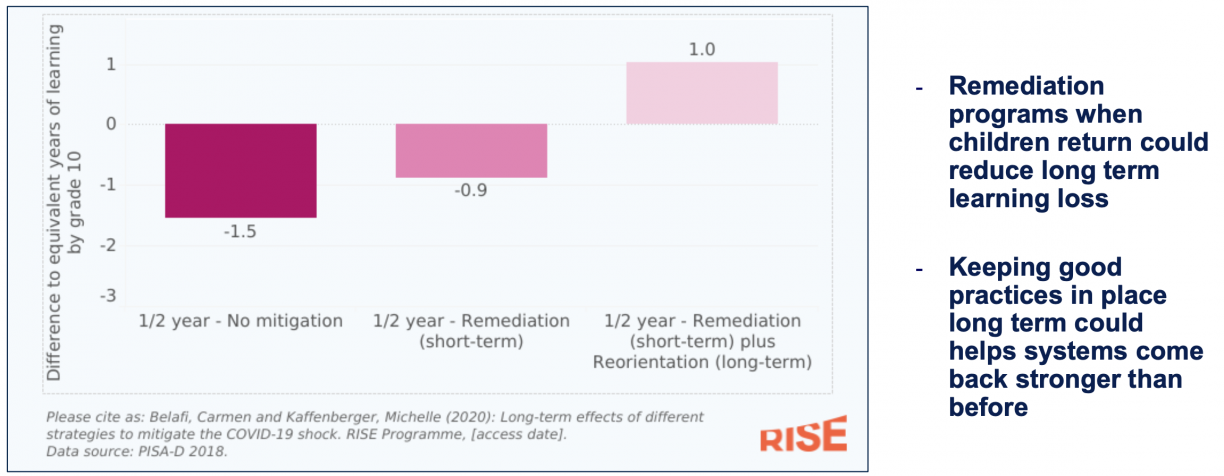
Empirical evidence shows large learning losses during school closures, but also successful efforts at recovery of lost learning.
- A new empirical study by the RISE Nigeria Country Research Team (Okoye) measured learning losses during 6 months of school closures for Grade 2 to 4 students across 76 low-cost private schools in Nigeria. It pointed to a significant shock from closures, with losses roughly the same for girls and boys.
- Learning levels recovered with supplemental lessons, but unequally; children with less educated parents and no access to learning at home were most likely to fall behind.
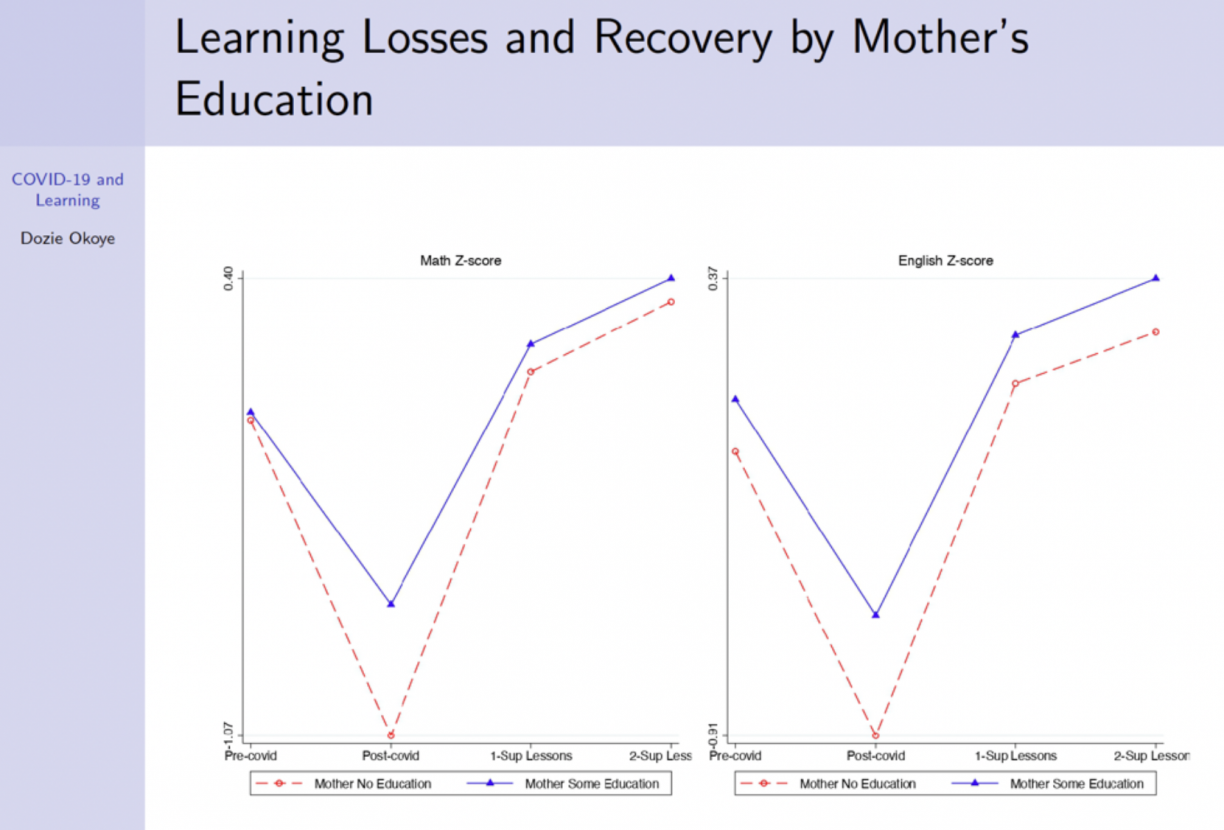
- While the ability to learn from home can help to mitigate losses for some, learn-from-home strategies also risk exacerbating existing inequalities and widening learning divides.
What do we learn from a pilot study of one such recovery programme that aims to help children catch up on foundational skills in Pakistan?
- A study underway by the RISE Pakistan Country Research Team (Macdonald et al) evaluates the implementation of a remedial targeted instruction programme to help struggling primary students in Grades 1 through 5 catch up on basic literacy and numeracy across 1250 primary schools following the pandemic-induced school closures in Pakistan.
- The programme also makes use of a low-tech technology tool (an app available on smart phones), which supports teachers to assess, group, and teach children at the level they are at when they return to school.
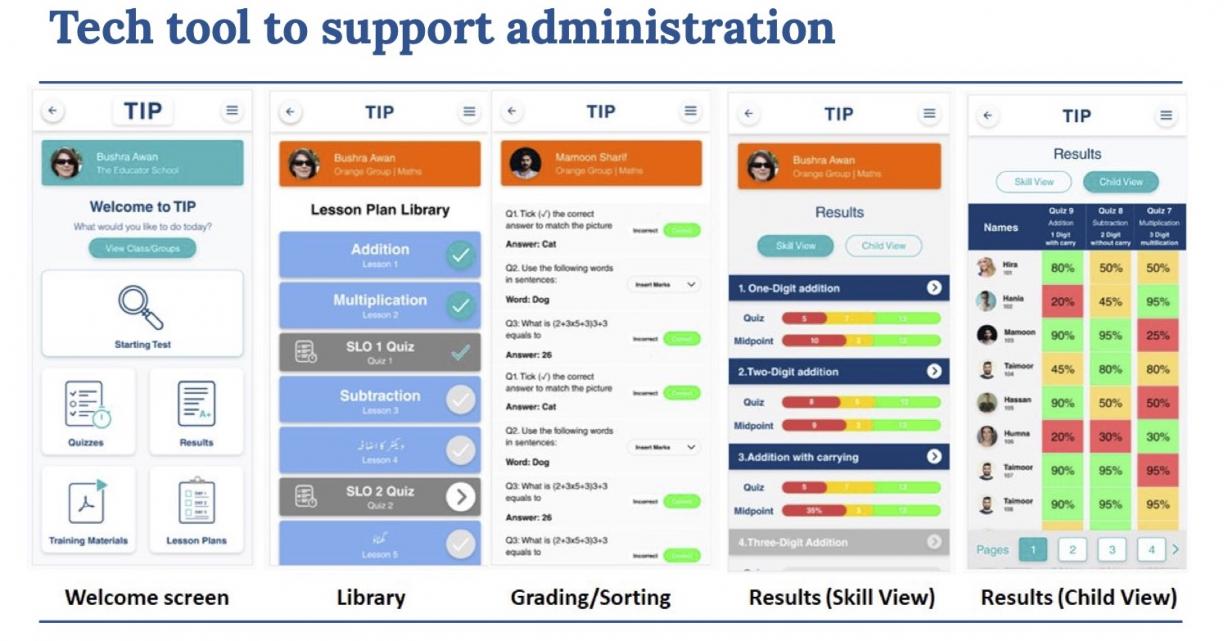
- Results from the initial pilot of 8 private schools show strong gains to learning outcomes, with an investigation into the full sample of 1250 schools (plus causal attribution) underway.
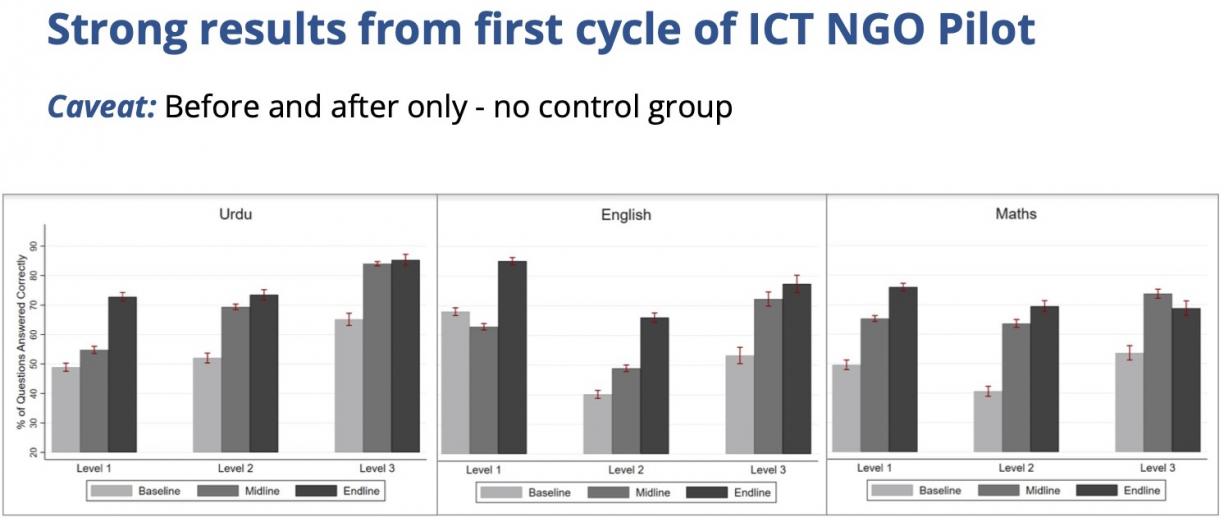
Watch the WIDER Development Conference session below:
Footnotes:
RISE’s panel on the third day of the UNU-WIDER Conference last month set out to shed light on the longer-term impact of COVID-19 on children’s learning outcomes. Three studies were presented: simulations of potential learning losses, actual empirical measures of learning lost in Nigeria, and a study of efforts to remediate and recover from the pandemic in Pakistan.
Taken together, the three presentations highlighted the ways in which the pre-existing learning crisis has been exacerbated by COVID-19 and underlined the need for immediate responses to remediate losses by prioritising foundational skills, assessing children on return, and aligning instruction with children’s new levels. Simultaneously, they highlighted the potential that recovery (if done right) has to drive long-term systems change that brings instruction and children’s levels into better alignment.
A study by Michelle Kaffenberger models projected learning losses from the pandemic-induced school closures and simulates different mitigation scenarios to help education leaders plan for school reopening. It found that the youngest children stand to lose the most: For today’s 1st graders, missing half a year’s learning could reduce long-term learning outcomes by more than two years.
COVID-19 could cause losses that far exceed the actual time schools have been closed, because learning losses can continue to build after children return to school; when children re-enter school behind the curriculum, they continue falling further behind without remediation.
Kaffenberger identifies three clear steps to mitigate losses (and potentially even build systems back stronger) following the return to school:
Set learning goals that focus on foundational skills
Children who miss foundational skills early rarely catch up, and young children who miss foundational skills face the largest negative, long-term consequences.
Adapt instruction to meet children where they are
Children will need remedial instruction when they return to school. Approaches such as streamlining or condensing the curriculum, beginning the year teaching from the previous year’s curriculum, and Teaching at the Right Level-type approaches can help. (All require supporting, equipping and enabling teachers to adapt instruction.) ALIGNS principles can help.
Strive for system changes that better align instruction and children’s levels not just in the short-term, but in the long-term
Political openness to addressing low learning and curriculum reforms to better align instruction with children’s learning levels and needs (for example, supporting pedagogy that teaches concepts and procedures, and ensures children fully master content before moving on) is critical and could help systems come back from the crisis stronger than before.
A new empirical study by the RISE Nigeria Country Research Team (Okoye) measured learning losses during 6 months of school closures for Grade 2 to 4 students across 76 low-cost private schools in Nigeria. It pointed to a significant shock from closures, with losses roughly the same for girls and boys.
Learning levels recovered with supplemental lessons, but unequally; children with less educated parents and no access to learning at home were most likely to fall behind.
While the ability to learn from home can help to mitigate losses for some, learn-from-home strategies also risk exacerbating existing inequalities and widening learning divides.
A study underway by the RISE Pakistan Country Research Team (Macdonald et al) evaluates the implementation of a remedial targeted instruction programme to help struggling primary students in Grades 1 through 5 catch up on basic literacy and numeracy across 1250 primary schools following the pandemic-induced school closures in Pakistan.
The programme also makes use of a low-tech technology tool (an app available on smart phones), which supports teachers to assess, group, and teach children at the level they are at when they return to school.
Results from the initial pilot of 8 private schools show strong gains to learning outcomes, with an investigation into the full sample of 1250 schools (plus causal attribution) underway.
The views expressed in this piece are those of the author(s), and do not necessarily reflect the views of the Institute or the United Nations University, nor the programme/project donors.
This article is republished from The Rise Programme with permission. Read the original article.
 Join the network
Join the network




